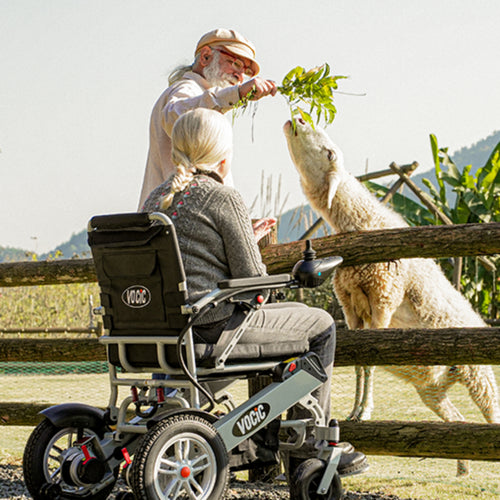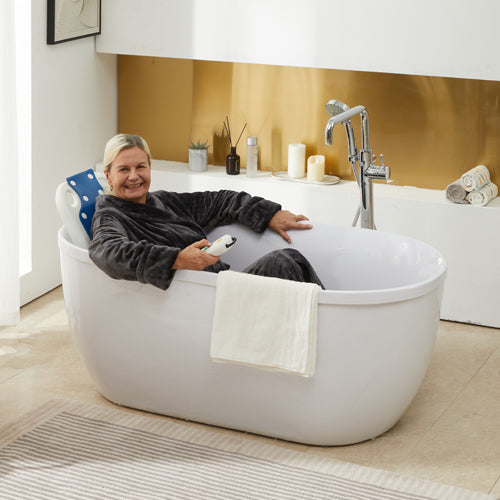For people with mobility challenges, learning how to use a wheelchair can be a life-changing skill. This restores confidence and independence. Since it may be the first time a person is using a wheelchair or perhaps helping another person, being aware of the proper methods ensures safe and comfortable use. Also, it makes the individual move freely. With the basics, it will make sure that the ride is comfortable and safe in all situations.
The Importance of Proper Wheelchair Use
Proper use of a wheelchair goes beyond the ability to roll forward. It entails position, posture, and control of it all, which influence your comfort and your health in the long run. The wrongly adjusted wheelchair may cause back pain and exhaustion. In addition, knowing how to get in and out safely prevents injuries. Following the usage also prolongs your wheelchair's life, which makes it dependable in the years to come.
How to Use a Wheelchair Safely: A Step-by-Step Guide
Your manual wheelchair or motorized wheelchair must move safely. Therefore, before using it, you have to examine the parts of the wheelchair. You should know how they operate by being mindful of the brakes, the handles, among others, just to make sure that you move safely and easily.
Check Your Fit
Adjust the seat height and the backrest sitting. The height of the footrests should not be too high to avoid discomfort in the feet. The backrest must not be uncomfortably applied to the spine. Brakes and hand grips must be convenient. Just in case you have a new wheelchair, take time to test it inside before venturing out. When planning to purchase a wheelchair, ensure it meets your needs for comfort, control, and mobility, both indoors and outdoors.
Sitting in the Wheelchair
Install the wheelchair with the brakes locked. Back up slowly until the seat is touching your legs and drop down carefully by grabbing onto the armrests. Make sure that your hips are fully in the back and center.
Moving Forward and Backward
To proceed, hold the hand rims at the hips and push equally in each direction. In order to slow down or halt, press the rims lightly in the reverse direction. To reverse, you need to do the reverse action by slowly pulling the rims toward you.
Making Right and Left Turns
Once you acquire the beat, it is not complicated to turn. In order to move right, press the left wheel and keep the right stationary. To turn left, do the reverse. The turns become easy and instinctive with practice, and make it possible to do tight turns even in tight spaces.
Getting Out of the Wheelchair
You should not leave out leaving the brakes locked. Sit in the seat and use the armrests, pushing the feet level flat on the ground slightly forward. Move at a slow pace, particularly when you have weak balance.
Navigating Different Terrains with Your Wheelchair
Various surfaces demand various methods. Inside, the floor can be glided easily with the smooth flooring. Outside, there can be gravel, grass, or slopes. Go straight to the approach ramps and push with a steady strength, maintaining the body balance. On sloping ground, lean forward a little so that it becomes stable. When using the best electric wheelchair for your needs, it is better to use the joystick slowly to have more control.

Tips for Using Different Types of Wheelchairs
Wheelchairs do not all work similarly. Knowing the type of model that you are using, manual, electric, or lightweight, will assist you in adapting to it and using it safely.
Propelling a Manual Wheelchair
The use of manual wheelchairs is reliant on arm strength. You should never forget to bend your elbows a little, push without jerking, to keep them off. Gloves can be used to make long journeys easier.
Operating an Electric or Power Wheelchair
Power wheelchairs require a bit of orientation. Begin by practicing in a field or flat space to familiarize yourself with joystick sensitivity and turning radius. It has been noted that with the help of modern designs like responsive joysticks and smoother steering systems.
Using a Lightweight and Portable Wheelchair
Lightweight models should be used by independent users since they are required to be flexible. Select a wheelchair weighing under 50 pounds. A foldable design is also important for easy transport and storage.
Choosing the Right Wheelchair for Your Needs
Think about your physical requirements, way of life, and where you will most likely use it. Here are two recommended models from VOCIC.
VOCIC V53 Lightweight Foldable Power Wheelchair
The VOCIC V53 Lightweight Foldable Power Wheelchair has become easier than ever to move around indoors or outdoors. This model is designed to be comfortable and convenient. It has a durable aluminum frame and simple joystick control. It can be easily carried in automobiles because of its foldable capability. The V53 is more convenient for individuals who travel extensively or have a small house space.
VOCIC V81 Ultra-Light Carbon Fiber Electric Wheelchair
In case you require an ultra-light and highly mobile wheelchair, then the VOCIC V81 Ultra-Light Carbon Fiber Electric Wheelchair is a good option. It is produced with the latest carbon fiber, which is tough yet light in weight, and the electric assist option also gives the user a smooth and comfortable ride. It is also airline acceptable and quick to fold, thus ideal with people who love to keep on the move and active.
The important ones are comfort, durability, and portability. Such models as V53 and V81 by VOCIC combine high performance with a sleek design and provide their users with a sense of confidence and autonomy regardless of where one wants to travel.

How to Maintain Your Wheelchair
Consistently taking care of your wheelchair to ensure it works safely and smoothly. Test tires every week on wear and inflation. Tighten screws and bolts once a month, and more so when traveling on rough roads. Wash up the frame and upholstery with mild soap and water. In the case of power wheelchairs, it is recommended that the battery be charged after every use, and the controls should not be exposed to water.
In case of unusual sounds or poor functioning, book a professional service. Preventive care is what helps not only to prolong the life of your wheelchair, but also to guarantee your comfort and safety daily.
Conclusion
The process of learning how to use the wheelchair is a path to a more independent and self-confident person. The key to improving mobility is to have a properly fitted wheelchair, which becomes an empowering tool. New inventions such as the VOCIC motorized wheelchairs, like VOCIC V53 and V81, help in making living easier in everyday life. One should keep in mind that it is not only about moving in the right direction, but also being safe and free.
FAQ
Can I use a wheelchair even if I can walk?
Yes. Some drive wheelchairs as a form of conserving energy, reducing pain, or covering vast distances since it becomes difficult to walk.
How to navigate a wheelchair?
For a manual model, push forward with smooth and even pushes on the rims and pull back with gentle and easy pulls. You also need to be more familiar with how to turn around and practice diligently. With power models, use slow pressure on the joystick to move it.
How do you unlock a wheelchair?
Where the wheelchair is designed, push or pull the brakes at the rear wheels depending on the manner in which the wheelchair has been designed.
Do you push or pull a wheelchair up a ramp?
When using a ramp, always push the wheelchair forward at a steady speed. Never pull backward because it may be hard and unsafe.
How do I turn on a wheelchair?
In the case of electric wheelchairs, you can switch on the power on the control panel button and then use the joystick to move to the area you wish to be.







